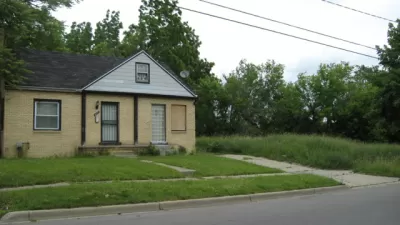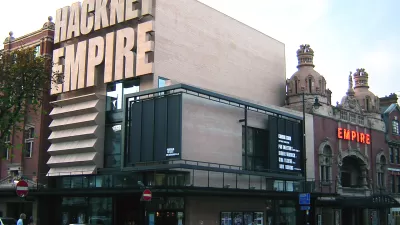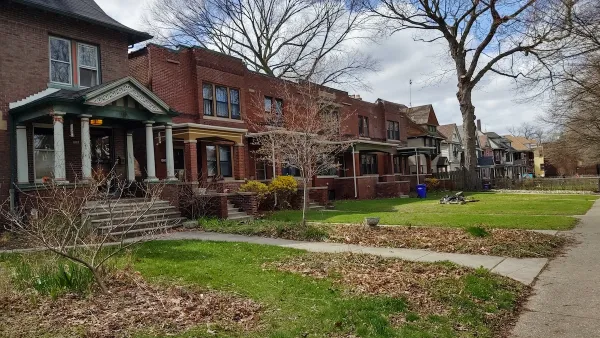Would the Motor City have produced Motown without pianos in every living room?

"The history of American music was literally shaped by the single family housing character of Detroit," writes Aaron M. Renn.
David Maraniss's new book, Once in a Great City: A Detroit Story, points to the signs of decline as early as 1963 when the city was in its economic and artistic heyday. (As Adam Gopnik keenly describes it in The New Yorker, "Humpty Dumpty's most poignant moment [was] just before he toppled over.") But here Renn zeroes in on a housing lesson that runs counterintuitive to today's thinking about urban planning. The single-family homes of Detroit allowed working- and middle-class families to accommodate pianos; and the piano was the springboard for the great musical energy that would become known around the world as Motown.
Renn cautions against making too much of the connection. "As Gordy was founding Motown, Jane Jacobs was pointing out the trouble with Detroit’s 'gray belts' of single families that were already being abandoned." Certainly, Detroit was not the only city of its time with a predominance of single-family homes. Gopnik points to in-group competition, as studied by art historian E.H. Gombrich, as a likely cause of such renaissance, likening it more to 13th-century Florence than other Rust Belt cities. "If Detroit got it worse, it was partly because it had it better," Gopnik writes.
Renn's point is that cities would do well to think creatively about their unique sets of constraints and circumstances. "What this suggests is that cities shouldn’t despair too much about their existing built form, even if in many cases they are struggling with it. The question might be, what does that form enable that you can’t get elsewhere?"
FULL STORY: How Urban Planning Made Motown Records Possible

Planetizen Federal Action Tracker
A weekly monitor of how Trump’s orders and actions are impacting planners and planning in America.

Chicago’s Ghost Rails
Just beneath the surface of the modern city lie the remnants of its expansive early 20th-century streetcar system.

San Antonio and Austin are Fusing Into one Massive Megaregion
The region spanning the two central Texas cities is growing fast, posing challenges for local infrastructure and water supplies.

Since Zion's Shuttles Went Electric “The Smog is Gone”
Visitors to Zion National Park can enjoy the canyon via the nation’s first fully electric park shuttle system.

Trump Distributing DOT Safety Funds at 1/10 Rate of Biden
Funds for Safe Streets and other transportation safety and equity programs are being held up by administrative reviews and conflicts with the Trump administration’s priorities.

German Cities Subsidize Taxis for Women Amid Wave of Violence
Free or low-cost taxi rides can help women navigate cities more safely, but critics say the programs don't address the root causes of violence against women.
Urban Design for Planners 1: Software Tools
This six-course series explores essential urban design concepts using open source software and equips planners with the tools they need to participate fully in the urban design process.
Planning for Universal Design
Learn the tools for implementing Universal Design in planning regulations.
planning NEXT
Appalachian Highlands Housing Partners
Mpact (founded as Rail~Volution)
City of Camden Redevelopment Agency
City of Astoria
City of Portland
City of Laramie





























